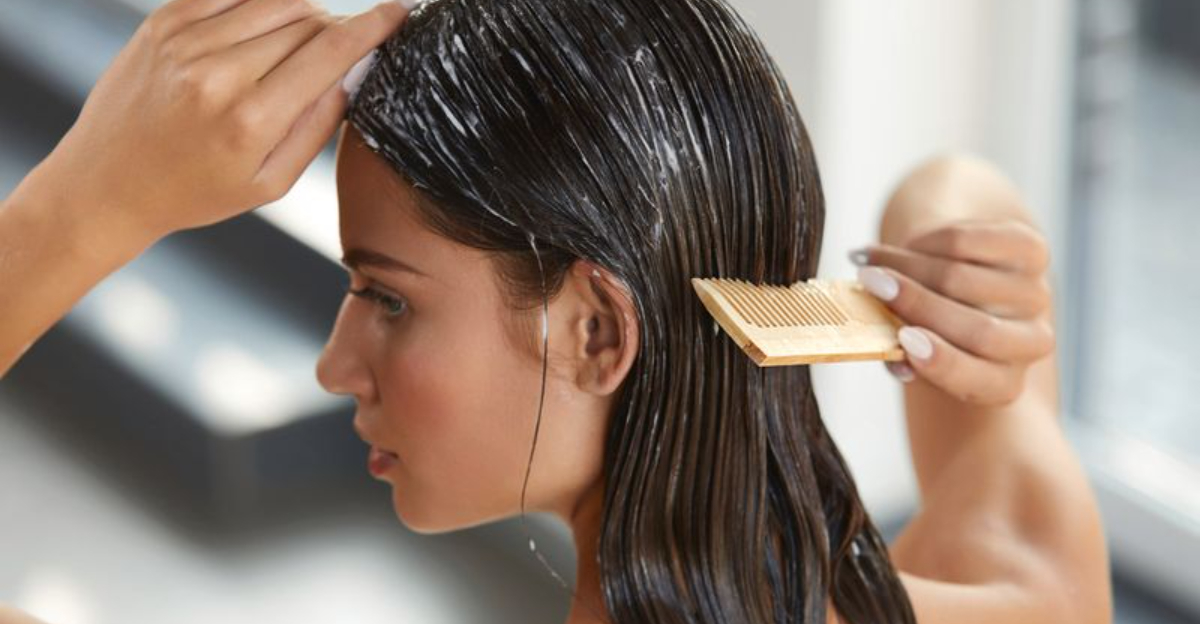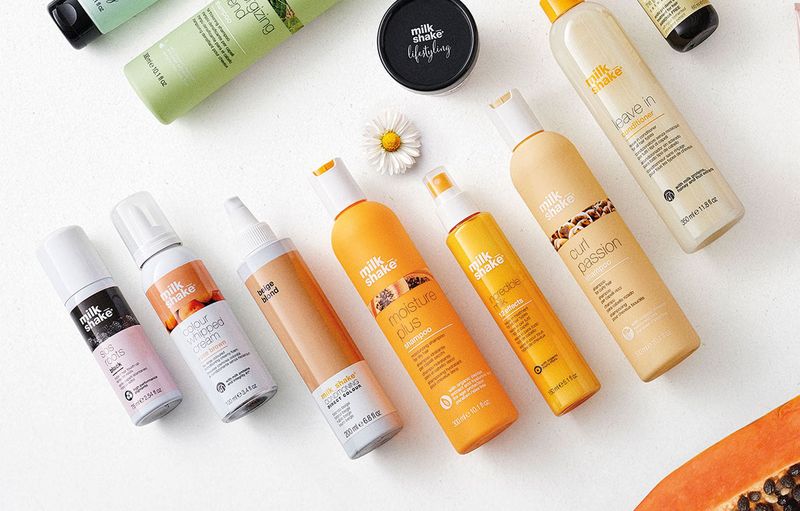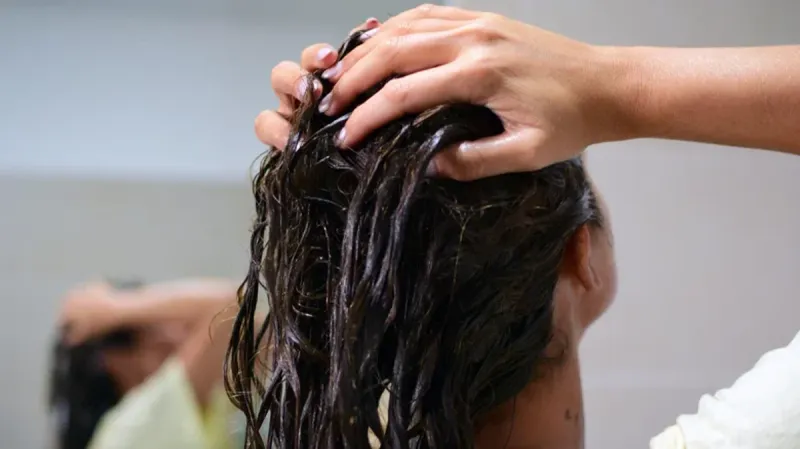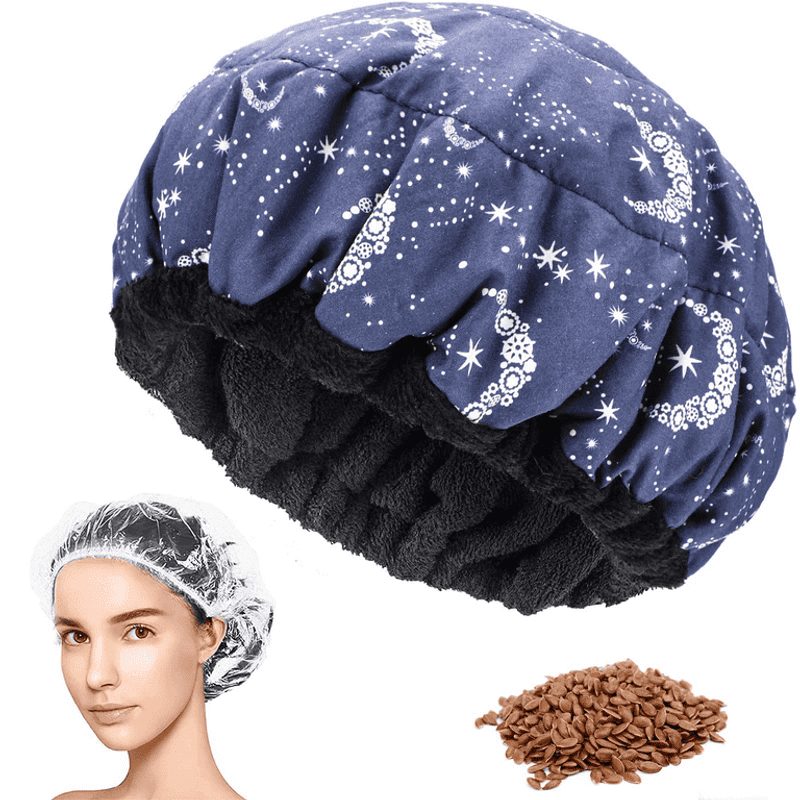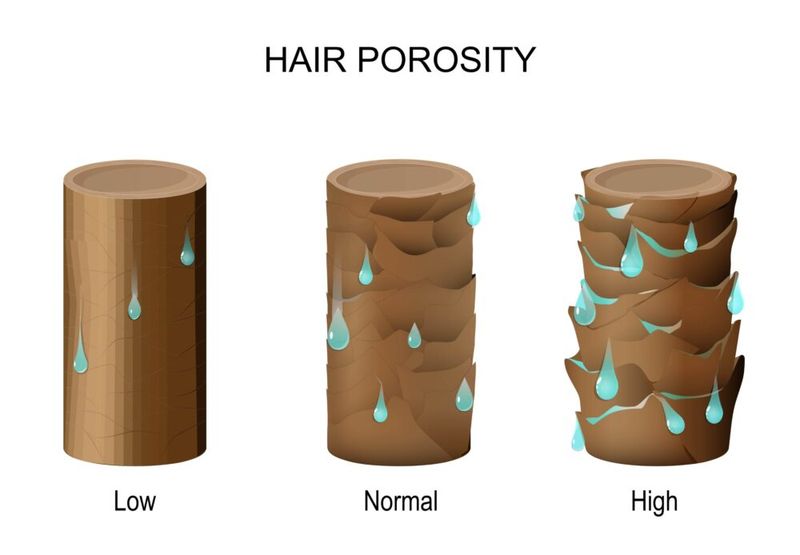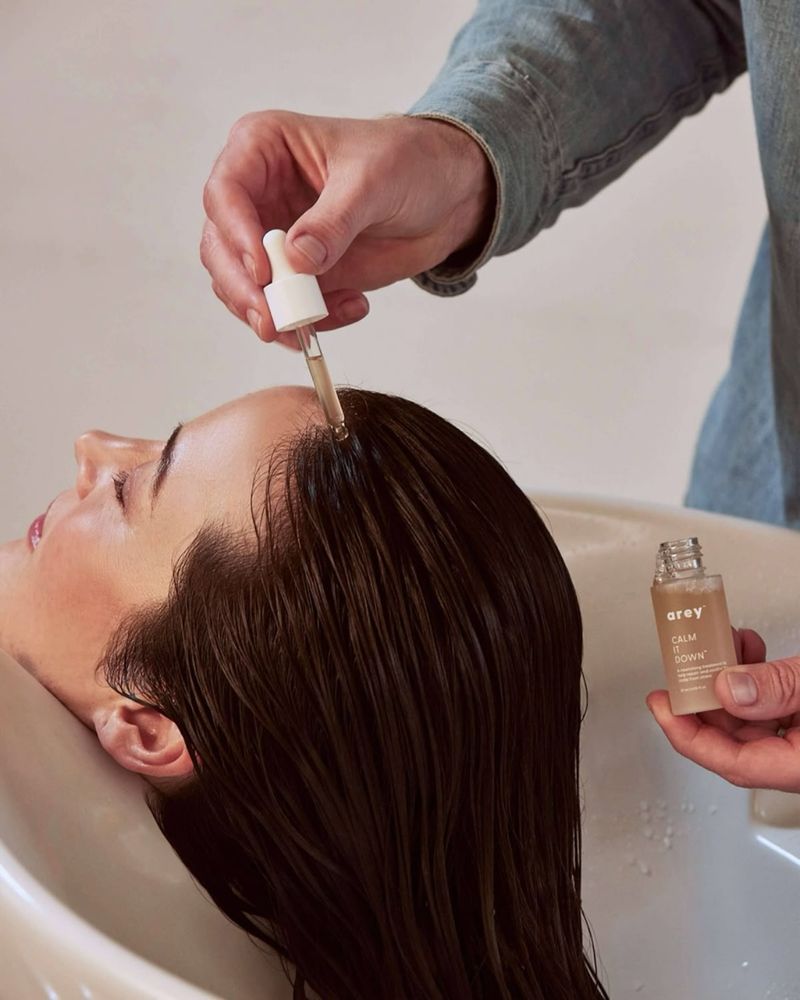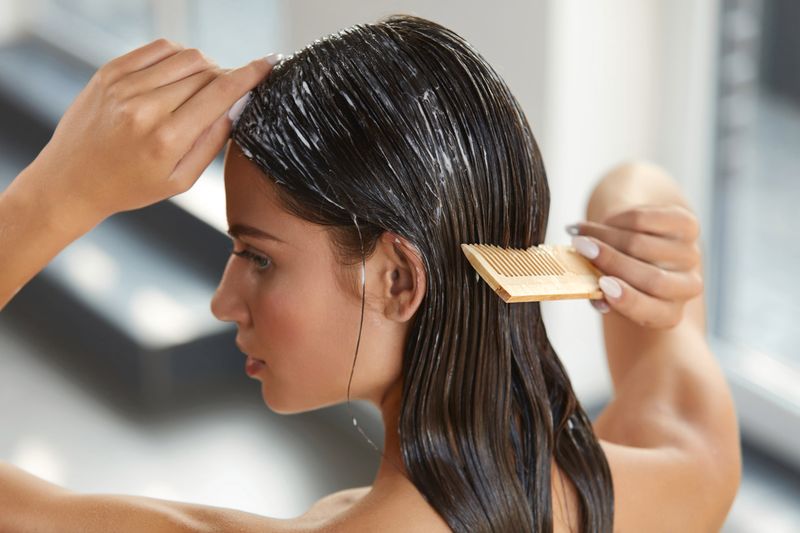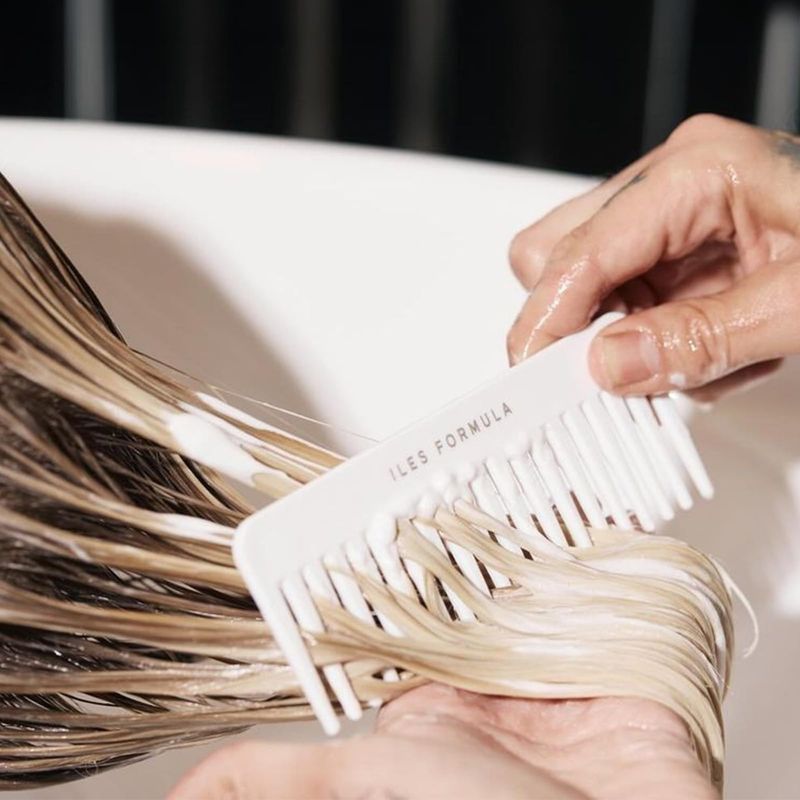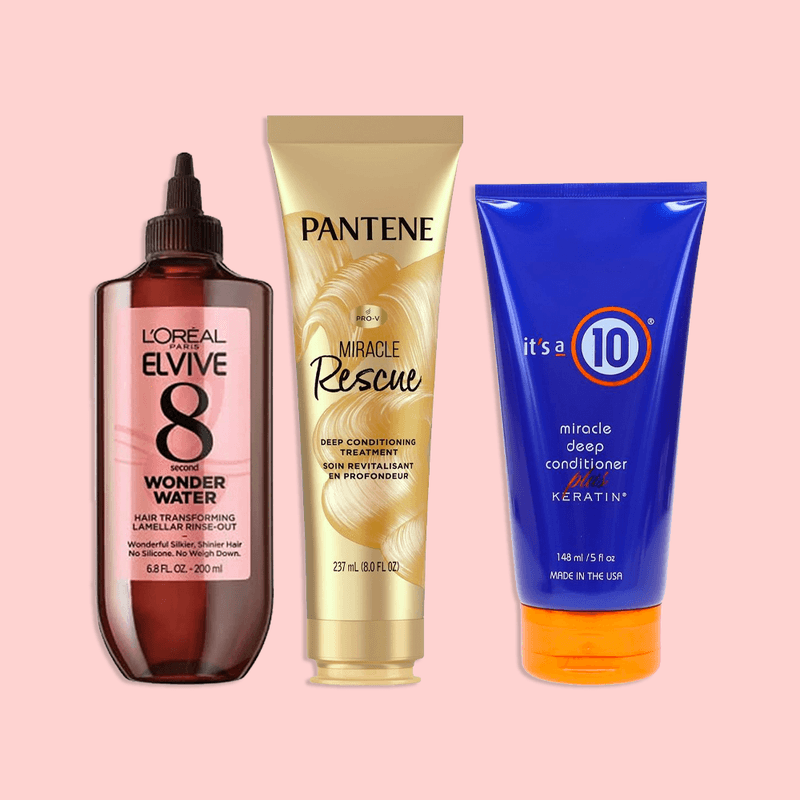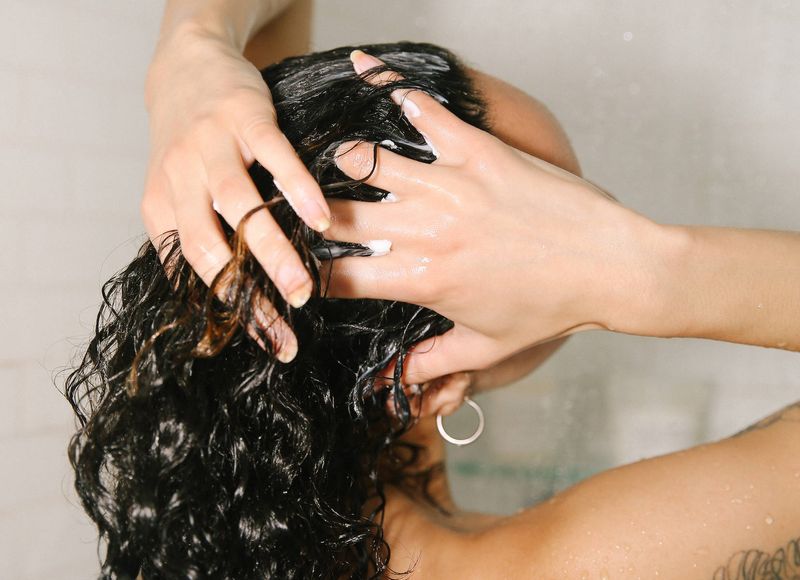Deep conditioning is a crucial step in any hair care routine, but many of us are doing it all wrong! Whether you have curly, straight, damaged, or healthy hair, proper deep conditioning can transform your locks. Let’s explore common mistakes and how to fix them for that salon-fresh feeling every time.
1. Skipping the Pre-Wash Detangle
Tangled hair prevents conditioner from distributing evenly. Gently work through knots with a wide-tooth comb before washing to ensure every strand gets nourished.
Your conditioner will penetrate more effectively when hair is properly prepared.
2. Using Too Little Product
Many clients barely coat their strands! Apply generously from mid-lengths to ends, ensuring complete coverage.
Fine hair needs quarter-sized amounts while thick, curly textures might require double that for optimal results.
Related: -7 Straight-Hair Problems No One Talks About And 8 Easy Fixes That Shine
3. Rushing the Process
Lightning-fast conditioning won’t transform your hair. Deep conditioners need 15-30 minutes minimum to work their magic.
Patience allows ingredients to penetrate the hair shaft and repair damage from within.
4. Applying to Dirty Hair
Product buildup creates a barrier that blocks conditioning benefits. Always shampoo thoroughly first to remove oils, silicones, and styling products.
Clean hair absorbs nourishing ingredients more effectively than dirty strands.
5. Neglecting Heat Activation
Room-temperature conditioning misses crucial benefits. Heat opens the cuticle, allowing deeper penetration of nourishing ingredients.
Use a shower cap or microwavable heat cap to enhance your treatment’s effectiveness dramatically.
6. Over-Conditioning Fine Hair
Limp, greasy locks often result from too-heavy products. Fine-haired beauties should focus conditioner on ends only and choose lightweight formulas.
Weekly treatments are plenty—anything more risks weighing down delicate strands.
7. Ignoring Hair Porosity
One-size-fits-all approaches fail most hair types. Low-porosity hair needs heat to open the cuticle, while high-porosity hair requires protein-moisture balance.
Determine your porosity with the float test to select the right products.
8. Conditioning the Scalp
Greasy roots and clogged follicles result from misplaced product. Your scalp rarely needs deep conditioning!
Focus rich treatments from mid-shaft to ends where dryness and damage actually occur.
9. Using the Wrong Formula
Protein-heavy conditioners can make healthy hair brittle. Moisture-only formulas won’t help damaged locks.
Assess your hair’s needs: Breakage requires protein, dryness needs moisture, and most hair benefits from balanced formulas.
10. Use Microfiber Towels
Rough cotton towels damage freshly conditioned hair. Switch to gentle microfiber alternatives that absorb water without creating friction.
This simple swap preserves your conditioning results and prevents frizz before styling begins.
11. Section Hair Properly
Haphazard application leaves patches untreated. Divide thick or dense hair into 4-6 sections before applying conditioner.
Methodical application ensures every strand receives treatment, especially for curly or coily textures.
12. Use Application Tools
Fingers alone can’t distribute product evenly. Invest in a wide-tooth comb or specialized brush designed for product distribution.
These tools ensure conditioner reaches every strand, especially in thick or textured hair.
13. Rotate Your Products
Hair becomes immune to the same formula over time. Create a rotation of 2-3 different deep conditioners with varying ingredients.
This prevents plateau effect and addresses different hair needs throughout the month.
14. Read Ingredient Lists
Not all conditioners are created equal. Avoid products with excessive alcohol, which dries hair, or silicones that create buildup.
Look for natural oils, butter, proteins, and humectants matched to your specific hair needs.
15. Adjust Frequency Seasonally
Winter’s dry air and summer’s sun exposure change your hair’s needs. Increase conditioning frequency during harsh weather conditions.
Scalp oil production also fluctuates seasonally, requiring adjustments to your routine.
16. Don’t Skip Protein Treatments
Moisture alone won’t fix structural damage. Incorporate protein treatments monthly for color-treated, heat-styled, or naturally fragile hair.
These specialized formulas rebuild the hair shaft from within for improved strength and elasticity.

